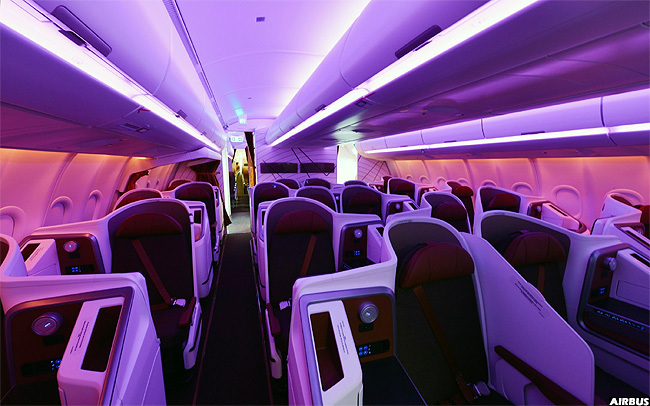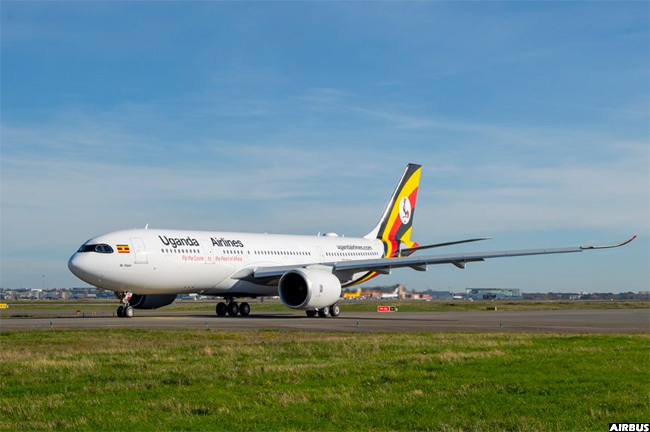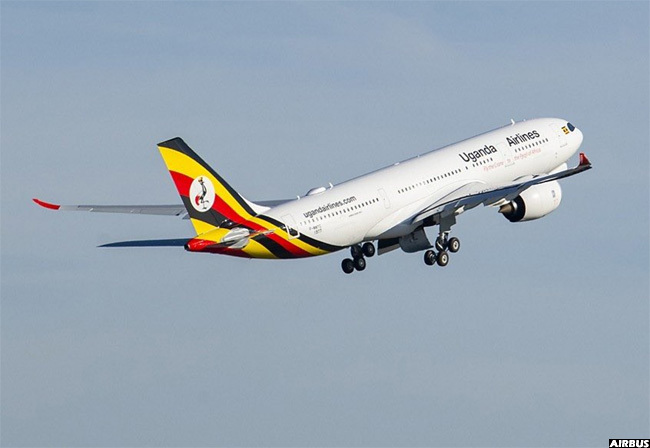Uganda's new Airbus plane completes test flight
In only a matter of weeks, this brand-new aircraft should be arriving home as earlier planned.
AVIATION
Uganda Airlines remains on course to expand its fleet following the emergence of pictures showing one of the two Airbus A330neos it ordered tasting the skies for the first time in a successful test flight in Toulouse, France.
This means that in only a matter of weeks, this brand-new aircraft, which is much larger than the four Bombardier CRJs that the company owns already, should be arriving home in December - as earlier planned.
"Get ready for #ANewWorld of greater connectivity and the finest passenger experience,"tweetedthe airline on Tuesday, alongside pictures of the new plane.
Exciting! Take a look at Uganda Airlines' beautiful @Airbus #A330neo on its maiden flight in Toulouse, France today.
— Uganda Airlines (@UG_Airlines) November 17, 2020
Get ready for #ANewWorld of greater connectivity and the finest passenger experience. pic.twitter.com/nIxuzPG5pK
Footage of the aircraft receiving a complete paint job thousands of miles away in France mid-last month ignited the sort of excitement from Ugandans that you could liken to that of a child who has just seen their new Christmas outfit.
And after catching a remote glimpse of the plane's classy Airspace cabin, and now its test flight, Ugandans will have been more than reassured of the arrival of the long-haul aircraft, a development that Uganda Airlines CEO Cornwell Muleya recently said would be "a big milestone - after 18 years of not going intercontinental".
The addition of the Airbus A330neos to Uganda's flag carrier's fleet is seen as a huge step in the development of the company, which celebrated its first anniversary two months ago.

Once given the all-clear to operate, the new aircraft will be used on intercontinental routes.
"We have three principal flights that we are going to make on these aircraft. The first route is to go to London (UK), then the second route is to go to Dubai in the Middle East and the third to Guangzhou (China)," Muleya said in a TV interview recently.
"This is where the majority of traffic out of Uganda goes and this is why these specific routes were chosen. In between, we shall be looking at Mumbai (India), routes across to West Africa and southern Africa to complete the interconnections.
"And all this is targetted towards business, tourism, the trade sector as well as the export sector for the fresh foods that are out of this country."

Recovery mode
After going into semi-hibernation for about half-a-year due to the raging coronavirus pandemic, Uganda Airlines resumed international scheduled flights on October 1 following Government's decision to re-open Entebbe International Airport to scheduled commercial operations.
Now the airline, like many others across the globe, is trying to make up lost ground.
The closure of airports around the world to prevent the spread of the coronavirus knocked the aviation industry well off its dizzying perch.
"[The year] 2020 has been devastating for the entire sector. I think at the height of the crisis - which was in March, April, May and June - the industry was down upto 90 per cent, which is a very big number," said Uganda Airlines chief executive Muleya.
"In Africa, I think more than 98 per cent of the capacity was down because of the closures of the airports. So we are just recovering."
But at least Uganda's flag carrier was in a better position than many others out there.
"What has played well for us is we are still in the startup phase, so during that [lockdown period] we had capital and we were opening routes, then we halted. Obviously by stopping to fly we were saving a bit of the capital that we had to deploy to open the routes. And now that the markets are opening, we are beginning to put the programme together.
"But otherwise the industry across the world still needs support," said Muleya.
At the onset of October, the company he leads - Uganda Airlines - hit the ground running with flights to Nairobi (Kenya), Dar es Salaam (Tanzania), Juba (South Sudan) and Mogadishu (Somalia) while complying with local and international guidelines for safe air travel in light of the pandemic.
Flights to Mombasa (Kenya) resumed earlier this month while those to Bujumbura (Burundi) will restart this Friday (November 20) and to Zanzibar later.
The airline is also planning to expand its African network to include Johannesburg (South Africa), Kinshasa (DR Congo), Harare (Zimbabwe) and Lusaka (Zambia) in the coming months.
'It is very safe to fly'

In a 'new normal' era of improvisations due to the rippling impact of the pandemic, many sectors have been attempting to get back on their feet for the last weeks. And with air travel trying to adjust, airlines are feeling the weight of the need to reassure travellers to get back on the plane.
Muleya has previously assured passengers that it is "very safe to fly", thanks to the filtration technology used on aircraft.
The International Air Transport Association (IATA) says that the high-efficiency particulate air (HEPA) filters in aircraft remove 99.9% of viruses such as COVID-19.
"Also, the air in the cabin is refreshed every three minutes - which is better than a hospital intensive care unit, where the air is flushed out every 10 minutes. So you are much safer on the aircraft than anywhere else in terms of health and safety," assured the Uganda Airlines CEO.
"Every passenger is required to present proof of a negative COVID-19 PCR test, which means the entire process through the airport up to the cabin is sterile. It is a sterile environment, with people who are coronavirus-negative as they travel across the entire system up to their point of destination."
For now, Uganda continues to eagerly wait for the arrival of its new aircraft.
"We have paid all the pre-delivery payments. We are now just waiting for the last payment when we receive the aircraft in December," said Muleya.
__________________________
THE DELIVERY PHASE

(Source: Airbus)
The delivery phase is spread over four or five days on average, dependent upon the aircraft programme. A standard delivery procedure takes place as follows:
First day: ground checks: external surfaces, bays and cabin visual inspection, static aircraft system and cockpit checks, engine tests.
Second day: acceptance flight: checks during flight of all aircraft systems (including cabin systems) and aircraft behaviour in the whole flight envelope.
Third day: physical rework or provision of solutions for all technical and quality snags open in delivery.
Fourth day: completion of technical acceptance. Technical closure of the aircraft and all associated documents attesting the aircraft's compliance to the type certificate and conformity to the technical specification allowing the issuance of the Certificate of Airworthiness.
Fifth day: transfer of the aircraft's title deeds to the customer airline: the aircraft changes owner. Preparation of the aircraft for the ferry flight to its home base.